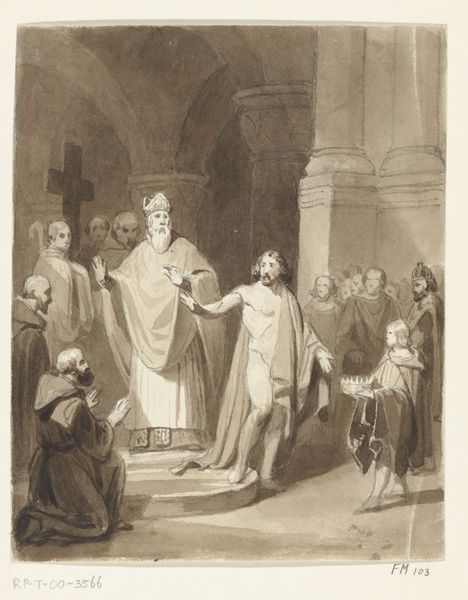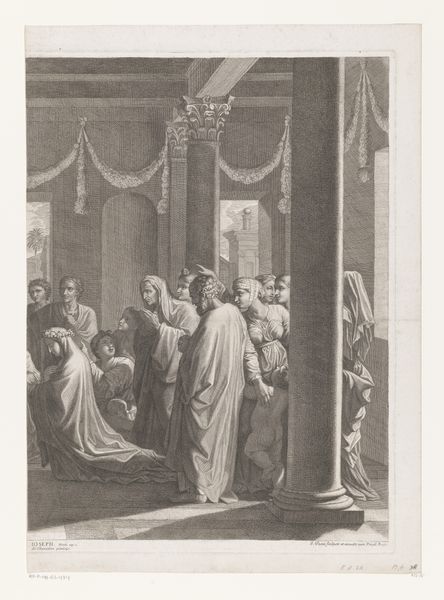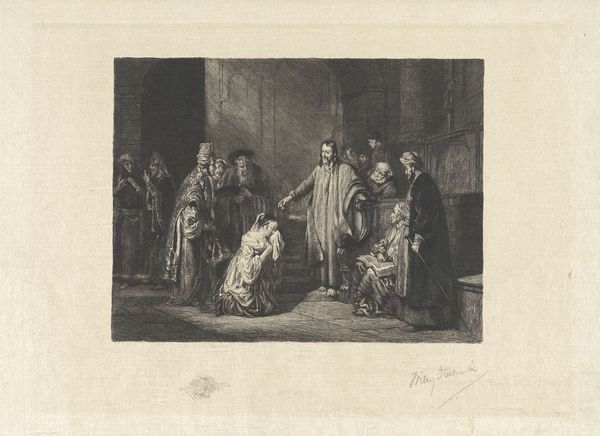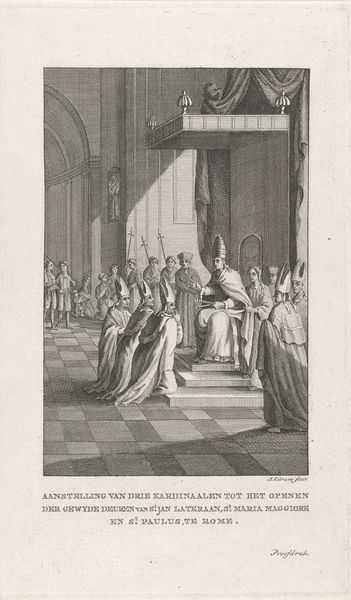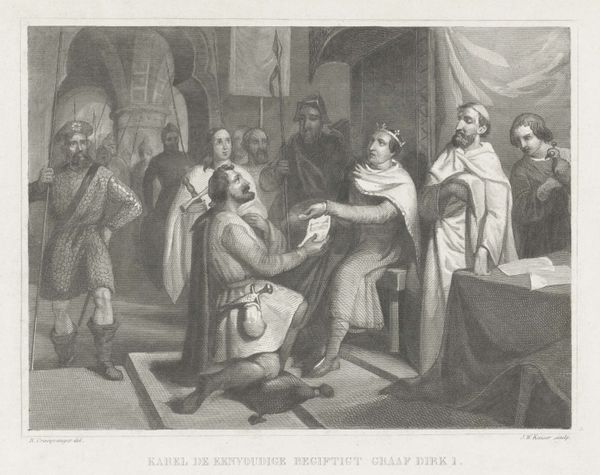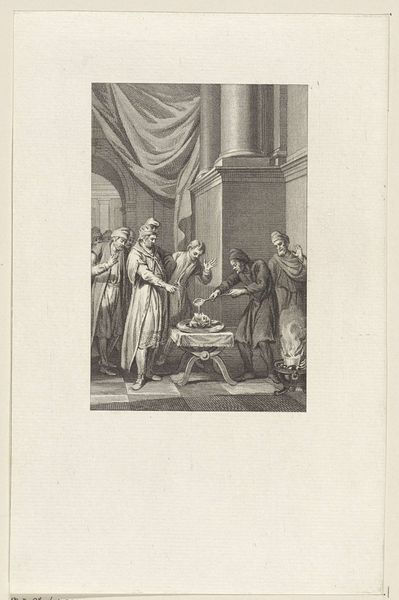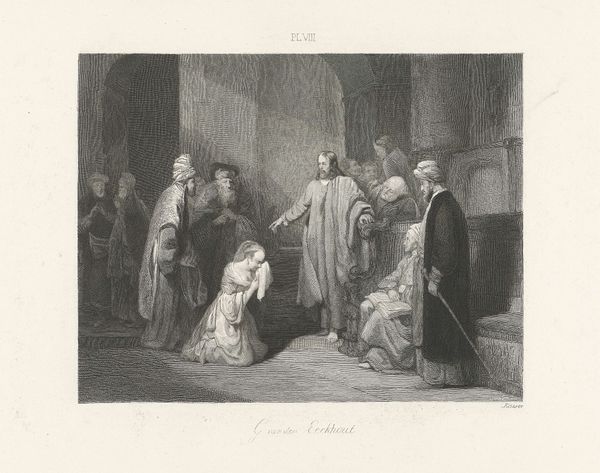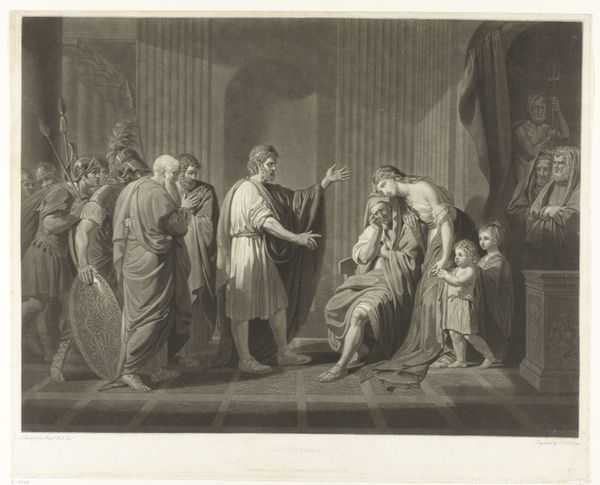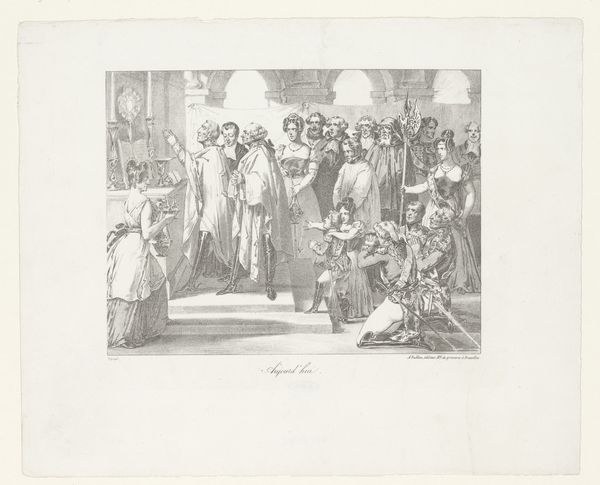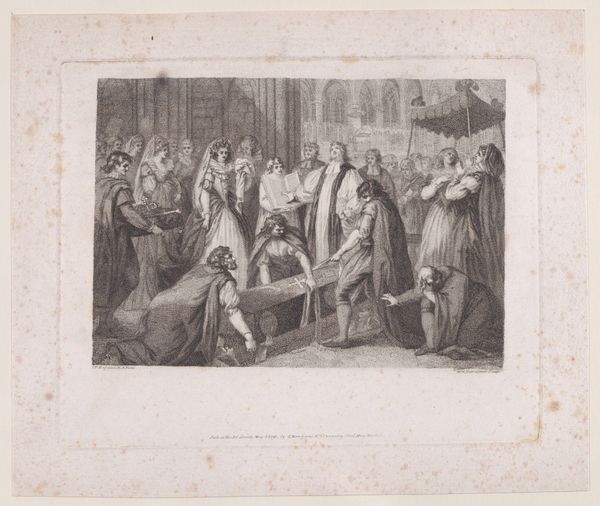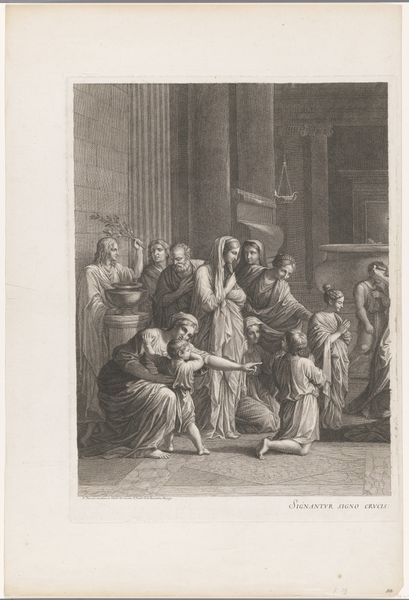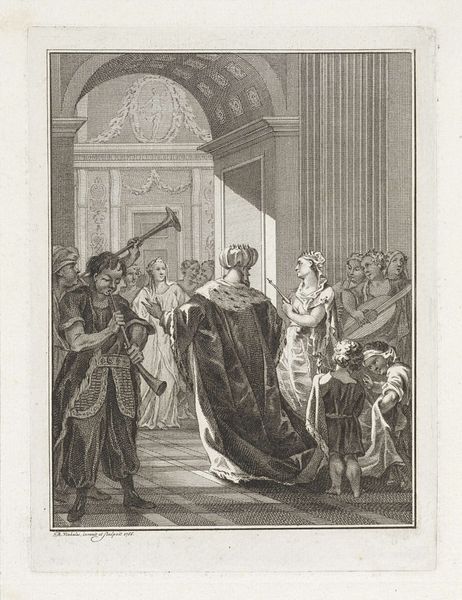
print, engraving
#
neoclacissism
#
narrative-art
# print
#
landscape
#
perspective
#
figuration
#
history-painting
#
academic-art
#
engraving
Dimensions: height 518 mm, width 774 mm
Copyright: Rijks Museum: Open Domain
Editor: So, here we have Charles Howard Hodges' "Christus bij Martha en Maria," created in 1809. It's an engraving. The way it’s composed almost feels like a stage, with the figures carefully placed. I’m interested in your thoughts on this piece. What catches your eye? Curator: Well, given it's an engraving, I'm immediately drawn to consider its production. How was this image disseminated? It’s not just a piece of art, it's a commodity produced through skilled labor. Editor: That’s a perspective I hadn’t fully considered. So you're looking at the means of making it, rather than necessarily the subject matter itself? Curator: Exactly. This wasn't a unique painting displayed in a grand salon, but an easily reproducible image accessible, potentially, to a wider audience. Who was consuming this image? Were they religious institutions? Middle-class families? The print served a very different social function than an oil painting would. Think about the economic systems at play in the world that determined who could commission or afford an image like this. The material itself, paper and ink, and the labor invested in making the matrix is what determines meaning for me. Editor: That makes me rethink the entire purpose of its existence and also appreciate it. I was only seeing the Bible scene before! Curator: And beyond that, what about the cost of materials at the time? The impact the process may have on the artist or society at large. Consider what social messaging is in the print for people and where might the consumer engage in its messaging? What choices did Hodges make to either endorse or undermine dominant ideas about religion, class and labour? Editor: It is intriguing to imagine the possibilities of meaning it possesses. Thanks! Curator: My pleasure! Reflecting on art through the lens of production really shifts our perspective, doesn’t it?
Comments
No comments
Be the first to comment and join the conversation on the ultimate creative platform.
